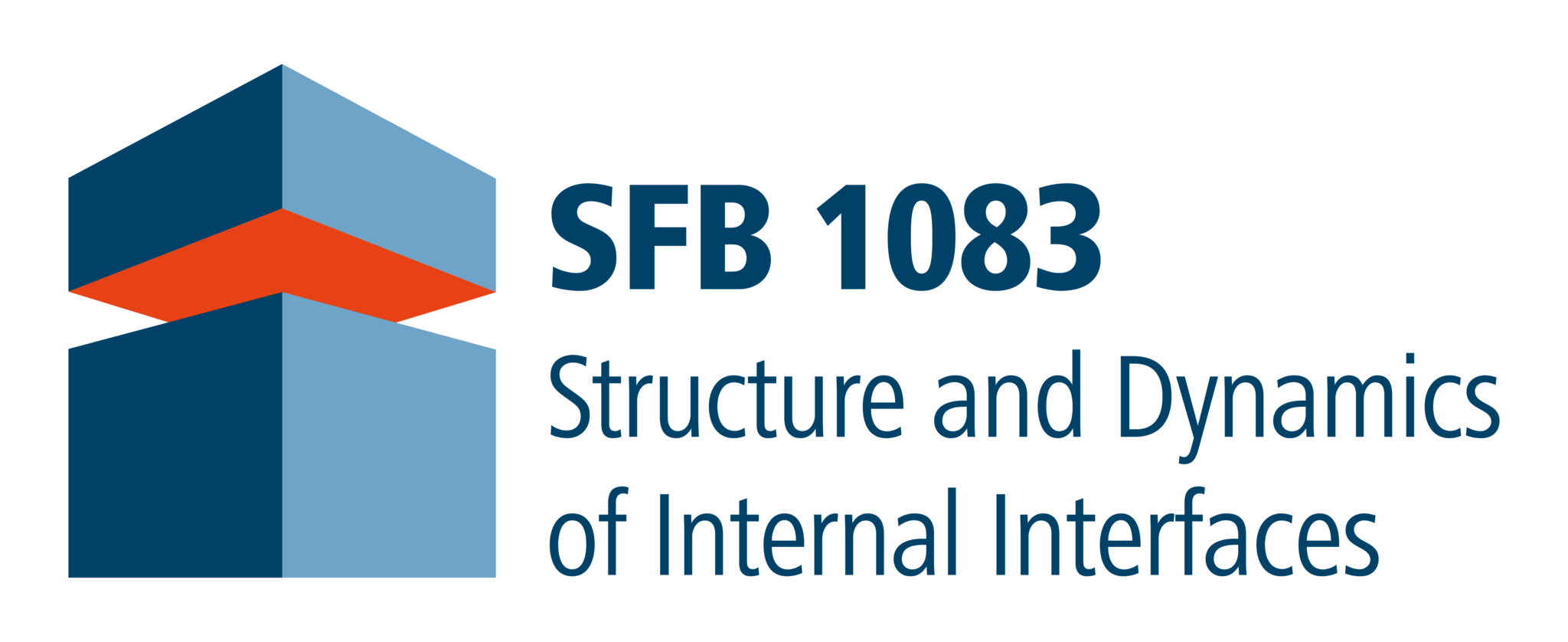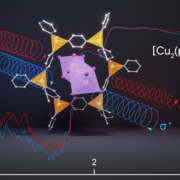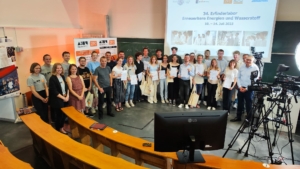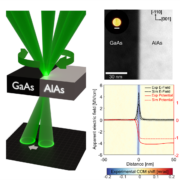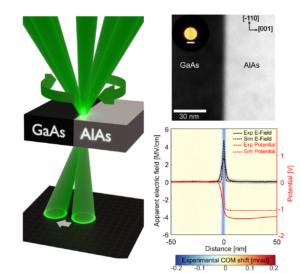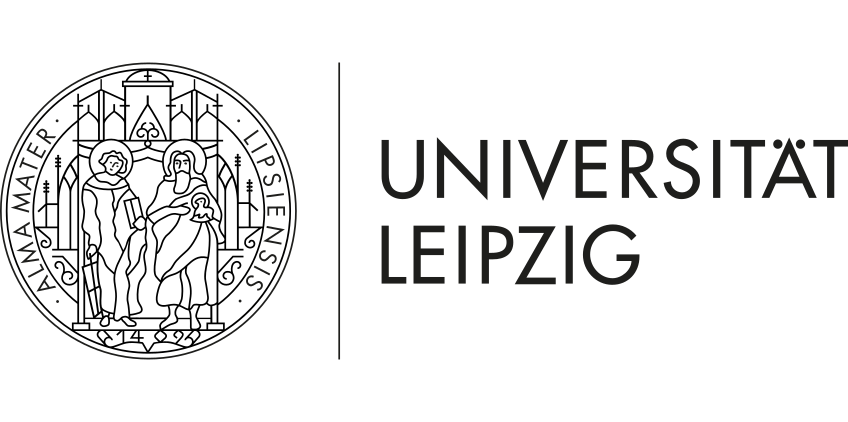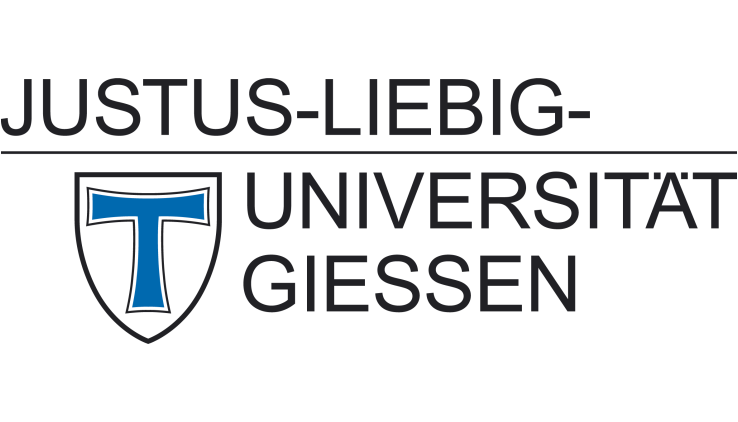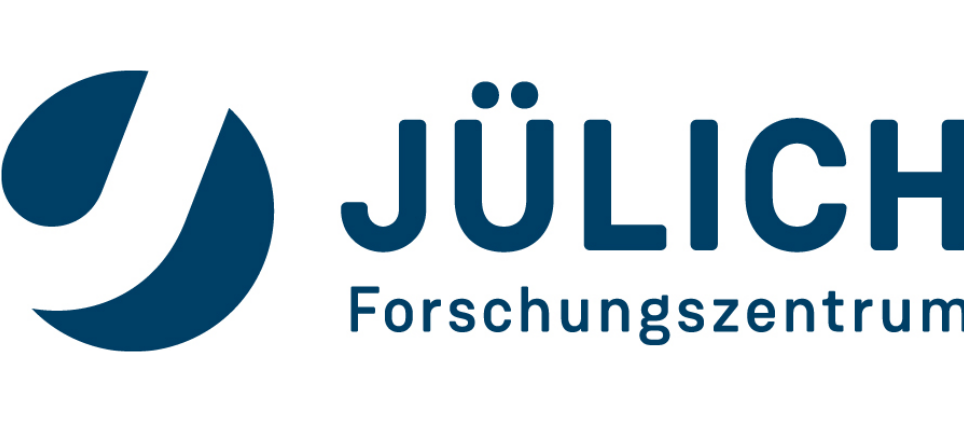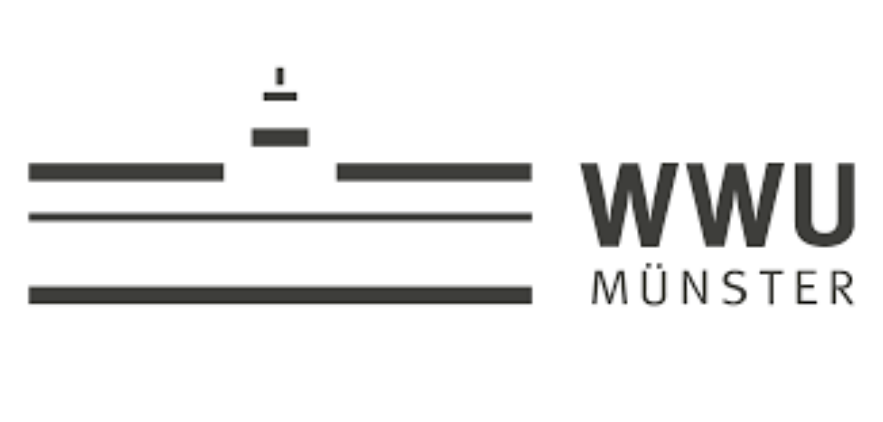Enhanced Circular Dichroism and Polarized Emission in an Achiral, Low Band Gap Bismuth Iodide Perovskite Derivative
Johanna Heine (A15) and Sangam Chatterjee (B2) successfully prepared a novel iodido bismuthate that shows strong optical activity despite being achiral
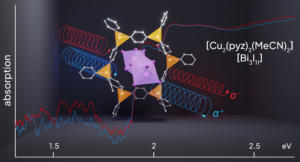
Reprinted with permission from J. Am. Chem. Soc. 2023. Copyright 2023 American Chemical Society.
Lead halide perovskites and related main group halogenido metalates offer unique semiconductor properties and diverse applications in photovoltaics, solid-state lighting, and photocatalysis. Recent advances in incorporating chiral organic cations have led to the emergence of chiral metal-halide semiconductors with intriguing properties such as chiroptical activity and chirality-induced spin selectivity. This enables the generation and detection of circularly polarized light and spin-polarized electrons for applications in spintronics and quantum information, fields that use the spin of electrons or photons to store and process data.
However, understanding the structural origin of chiroptical activity remains challenging due to macroscopic factors and experimental limitations. In general, chiroptical activity originates in the crystal symmetry of the solid state. However, the compound does not need to be chiral to exhibit chiroptical activity. Some non-centrosymmetric crystal classes are sufficient as well – a fact that is often overlooked in current research.
The groups of Dr. Heine (A15) and Prof. Chatterjee (B2) present a novel achiral perovskite derivative [Cu2(pyz)3(MeCN)2][Bi3I11] (pyz = pyrazine; MeCN = acetonitrile), that exhibits remarkable circular dichroism. Notably, single crystals display linear and circular optical activity as well as a significant degree of circularly polarized photoluminescence. The magnitude of these effects on par or even larger than what can be achieved by incorporating chiral organic molecules into perovskites. These findings provide insights into the macroscopic origin of circular dichroism and offer design guidelines for developing materials with high chiroptical activity without expensive chiral building blocks.
Publication
J. Möbs, P. Klement, G. Stuhrmann, L. Gümbel, M. Müller, S. Chatterjee, J. Heine
Enhanced Circular Dichroism and Polarized Emission in an Achiral, Low Band Gap Bismuth Iodide Perovskite Derivative
J. Am. Chem. Soc. 145 (2023) 23478 DOI:10.1021/jacs.3c06141
Contact
Dr. Johanna Heine
Philipps-Universität Marburg
SFB 1083 project A15
Tel.: 06421 28-25482
EMAIL
